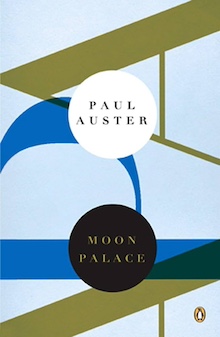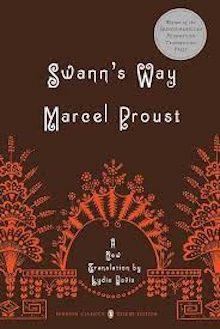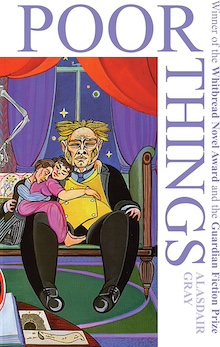A Venn Diagram of Not Reading
“If I actually finish a book, I feel like I deserve a Nobel Prize.”
“I can’t even guess when I last read a book. But I’d watch movies all day if I could. Especially Marvel ones.”
Overheard on a University of Rochester Shuttle
“In the last decade, she says, history has toppled from the king of disciplines to a numbing data set: a litany of trackable moments, the realm of machines.”
—Same Bed Different Dreams, Ed Park
I’ve been struggling with this piece for over two months now. Originally conceived of as a data-driven essay, it became unwieldy, a four-handed mess that pivoted over and again, yearning for a point to be made, a Big Idea to land.
Re-reading—and lightly editing—Enrique Vila-Matas’s Montano’s Malady (my favorite Vila-Matas, my favorite malady) has provided a structural solution that’s also a return to form. For better or worse, I don’t write essays. I don’t know how to categorize what it is that I do write, but this Vila-Matas novel that takes the form of a diary about writers who write diaries and who are literature-sick, infected with graphomania à la Fresán and the ex-writer in his “Part Trilogy,” endlessly referencing books, authors, living his life through literature, is more or less the spirit that has always inhabited this blog.
This attitude can come off as a bit elitist and a lot out of touch—par for the course when you read incessantly and the rest of the world generally doesn’t—but hopefully in the end all this handwringing about what these posts are or what their value is results in a momentary respite from the insanity of modern-day life, an intellectually stimulating journey through a journal. So here goes.
*
Over the past few months, I’ve been asking as many people as I could: “How many books did you read last year? Include anything and everything. Books you listened to. Graphic novels. I’m just curious as to how many books you consumed in 2023.”
I didn’t get a ton of responses (twenty-three to be exact, which may lead to small sample size problems, but let’s go with it anyway), with total numbers ranging from 7 to 152 and averaging out at a smidge over 55.
I don’t know what I expected—and as you’ll hopefully see, the actual number doesn’t really matter. I’m chasing a different whale here.
But, but the sake of nerdy numberness, feeding my statistical-mania, I want to point out that the mode of my data set was 40, the median 43. And, once again, the mean of my dataset was 55.2, with a standard deviation of 36.4. So 67% of the people I surveyed read between 18.8 and 91.6 books last year. That’s a huge difference—reading less than one book every two weeks, versus almost reading two each week—yet, to be honest, most probably captures the reading habits of all the people you and I know. The booksellers, editors, tweeters, general readers, family.
*
I’m still not sure this is the best way to start this post, but like I alluded to above, it’s a piece I conceived of as having four big beats, each overlapping a bit, creating a Venn diagram about reading (or not reading). As such, any starting point is valid, since there is no real logical development. Nothing truly linear.
For example, on December 29th, 2023, I tried to start this piece from the exact opposite place: the semi-recent report from National Endowment for the Arts on “Arts Participation Patterns in 2022.”
 In the style of Montano’s Malady, I can tell you the exact situation in which this journal started being written. I was in River Falls, WI, at Kaija’s house, in front of the fireplace, ignoring Domino, our corgi, as he whined for yet another dinner before destroying yet another stuffed object. I had been reading Paul Auster’s Moon Palace, which Kaija had gifted me as part of a newfound ritual of gifting books neither of us have read for the holidays so that we can spend Christmas Day reading something “at random.”
In the style of Montano’s Malady, I can tell you the exact situation in which this journal started being written. I was in River Falls, WI, at Kaija’s house, in front of the fireplace, ignoring Domino, our corgi, as he whined for yet another dinner before destroying yet another stuffed object. I had been reading Paul Auster’s Moon Palace, which Kaija had gifted me as part of a newfound ritual of gifting books neither of us have read for the holidays so that we can spend Christmas Day reading something “at random.”
I don’t know what I think of Paul Auster. I met him a couple times, including during his visit to Rochester back around 2011 when he told me two of the greatest baseball stories I’ve ever heard. His brand of post-modernism—coincidences and the novel as metaphor for the novel, for writing—was the shit when I was really into in college and for a few years thereafter. The New York Trilogy is a feat, it’s super fun to read and a book that asserts it’s bookness at almost every turn. It’s not unimportant to note that the three volumes that constitute the trilogy, and the trilogy itself, were first published by Sun & Moon Press (victory for the independent presses of America), run by Douglas Messerli and a series of “employees” I’m not sure ever really existed.
Nowadays, almost three decades on, aspects of Auster’s vibe seem pat, too cute. I’m not sure if that’s because the world was a simpler place back in 1995, or I was. And then there was that aggro James Wood takedown—which “Was it Fair? Was it Deserved?,” a great podcast about vicious reviews and whether they’re warranted, will be covering in an upcoming episode—sure did harsh my Auster interest, but, to be fair, reading him again in 2024, I have to admit, his books sure do go down smooth, and there’s something to be said for that. He’s fun to read, and his novels feel conventional, yet veer off down Lynchian paths but ways that are jouncy, filled with life-enhancing synchronicities rather than space-time foldings around ideas of evil. (Like Bob. Like Judy, whom we don’t talk about.)
The other time I met Paul Auster was when he did an event with Enrique Vila-Matas at the Cervantes Institute in New York for the release of Bartleby & Co. (Most people’s favorite Vila-Matas, possibly because it was first to be translated. It’s the prequel to, or flipside of, Montano’s Malady.) Declan Spring of New Directions was selling Vila-Matas’s books, the on-stage conversation about erasing the line between real-life and fiction because fiction, words, literature is a core part of the real-life of these two writers and many of us, was brilliant. There was Spanish wine. Everyone had a great time. (And my hotel accidentally charged me $5.45 for my stay instead of $545. I didn’t say a word. I’m sorry, Sohotel. I owe you one.)
Although your mileage with Auster, Vila-Matas, Fresán may vary, but there’s something comforting about slipping into a book where the narrator is an over-read intellectual thinking only in books and quotes. This sort of character—a consummate reader—is both a mirror and an aspiration; I read a ton, I get the references, but I don’t get all of them, we can’t read everything. Well, most of us, anyway.
And in America? Most people don’t read at all. As illustrated in that National Endowment for the Arts semi-recent report on “Arts Participation Patterns in 2022” mentioned above.
I’ll let these statistics speak for themselves. According to Figures 8 & 9, the percentage of Americans who read a book in the previous year has gone from 54.6% in 2012 to 48.5% in 2022. With only 37.6% of those surveyed having read a novel or short story collection last year. Which, to be fair, totally dwarfs the paltry 9.2% of Americans who read a poetry collection. (I personally didn’t.)
What I found interesting about this report, which I came across after setting down Moon Palace for the night, alone in front of the fireplace, surrounded by woods, loving the silence yet craving connection, a connection that felt so distant at that time, a very bleak one in my life, the latest in a string of mental health disasters that end friendships and leave me trashed and frantic, the interesting thing about the NEA study was how unsurprising it all was. And, given the paucity of coverage of the study and its depiction of modern life—sure, I was on a hand-wringing episode of “Connections” on NPR’s WXXI, and I know others fretted after hearing these stats, but the overall shock and awe expressed at earlier iterations of this study was definitely muted this time around—it’s as if all it generated was a big shrug. Yep, people don’t read as much as they used to. What did you expect?
*
 In my last post, I wrote out eleven suggestions for what scheme could define this blog for the next year. None of which I’ve actually pursued. That said, as a sucker for programs and rubrics that last a calendar year—to be honest, anything cyclical speaks to me—I decided that over the course of 2024, I would read all of In Search of Lost Time (at a rate of 10 pages a day) and all twelve volumes of Anthony Powell’s A Dance to the Music of Time (at a rate of a book per month beginning March 2024, ending in February 2025, based on the fact that the set I own starts with “Volume 1: Spring” and it’s most definitely still winter here in Rochester). Plus I want to finish Ali Smith’s Seasonal Quartet, which bears mention her. I only have Summer left to go, and I’m saving it for when I need it. I know it will be brilliant and consume my thinking in the best possible way. It’s nice to have things to rely on.
In my last post, I wrote out eleven suggestions for what scheme could define this blog for the next year. None of which I’ve actually pursued. That said, as a sucker for programs and rubrics that last a calendar year—to be honest, anything cyclical speaks to me—I decided that over the course of 2024, I would read all of In Search of Lost Time (at a rate of 10 pages a day) and all twelve volumes of Anthony Powell’s A Dance to the Music of Time (at a rate of a book per month beginning March 2024, ending in February 2025, based on the fact that the set I own starts with “Volume 1: Spring” and it’s most definitely still winter here in Rochester). Plus I want to finish Ali Smith’s Seasonal Quartet, which bears mention her. I only have Summer left to go, and I’m saving it for when I need it. I know it will be brilliant and consume my thinking in the best possible way. It’s nice to have things to rely on.
I started writing this post for the third time two weeks ago, immediately after finishing Swann’s Way in Lydia Davis’s translation. Lydia Davis, who, for anyone unaware, was Paul Auster’s first wife. I sketched out a plan to write seven articles this year: each one appearing a day or two after finishing a volume of Proust’s epic. They would build on one another, using December’s “hoarding” post as the launching point, spiraling out into all my usual touchstones: why do we read what we read?, how have MFA programs and Amazon algorithms changed our relationship to literature?, what is value?, how should we judge success?, etc.
Part of every article, or post, or whatever, would be a reading journal with stray quotes from Proust, ideas his work inspired, funny reactions—a sort of real-time reading in the vein of the Two Month Review.
But, to be honest, in reading Swann’s Way I took no notes. I sent along a few quotes to someone who could appreciate them and how they related to our lives, but for over half the book, I didn’t underline anything or fold over any pages, wanting my version of Swann’s Way to remain immaculate, as if the goal was to read it without leaving a trace.
That aside, quoting Proust at length in a blog post is Max Masturbatory. I could cite all the passages that, for me, reframed and annihilated jealousy. Swann’s Way contains beautiful ideas about memory, about how reputation and expectations determine reality. It’s brilliant and very quotable. As they say, it’s a damn good book.
The thing about Proust though, that I’ve become most fixated on, is how funny his gargantuan novel really is. There’s Marcel’s aunt, lying in bed, eternally unwell, very high maintenance, absurd in all her obsessions and concerns. Also, this volume includes an extended party scene where a costumed woman runs her bohemian salon from a throne, overseeing her guests, which include a doctor who can’t read human beings (a bit on the nose about the doctoring profession, if you ask me) and is never sure if they’re being sarcastic or not. His solution?: walk around half-smirking, ready to laugh if others laugh, scowl if they scowl. He creeps out everyone. And the conversations throughout! So French, so very very French. But with a hint of mockery.
Which I don’t remember from the first time I read Swann’s Way. (And then promptly stopped with his pursuit of lost time. Instead, I put off reading the rest to that mythical “someday.”) I was in awe of literature like this back when I was in my 20s. Proust was Big Literature with Big Ideas and Loads of Difficulty. A rite of passage. Not a beach read. And who has time for that?
*
 This is the first year I’ve ever paid attention to the Oscars. I have no time for movies given that I read approximately 120 books a year? But since I’ve seen Barbie and Poor Things and American Fiction (all adaptations of pre-existing texts, which tracks) I feel a bit more invested than usual. The fact that Oppenheimer and The Zone of Influence and Killers of the Flower Moon are also book-based adaptations is a bit of a thirst trap. That and my friend Lisa has seen almost all of them, and being able to talk to someone else about media you experience is always enjoyable. One could argue that art is less fun when you can’t tell anyone about the ending of The Curse. (Or, the only person you can talk to about it experienced the show only through written recaps.)
This is the first year I’ve ever paid attention to the Oscars. I have no time for movies given that I read approximately 120 books a year? But since I’ve seen Barbie and Poor Things and American Fiction (all adaptations of pre-existing texts, which tracks) I feel a bit more invested than usual. The fact that Oppenheimer and The Zone of Influence and Killers of the Flower Moon are also book-based adaptations is a bit of a thirst trap. That and my friend Lisa has seen almost all of them, and being able to talk to someone else about media you experience is always enjoyable. One could argue that art is less fun when you can’t tell anyone about the ending of The Curse. (Or, the only person you can talk to about it experienced the show only through written recaps.)
Although it’s getting down to the wire, the only thing preventing me from watching every “Best Picture” nominee is me. Most of the ones I haven’t seen are streaming, the others are running at the local theater I can walk to. If my heart was in it, I could be fully versed on the Oscars by March 10th. It’s totally doable. Which is not true of the National Book Awards.
The five longlists for the NBAs are traditionally announced mid-September with finalists revealed at the start of October and winners about six weeks later. With ten titles per category, there’s almost no possibility you’ll be able to read the longlisted titles—30 if you ignore poetry and young people’s literature, which I do, because I’ll never sleep with a poet and I don’t believe in the concept of literature written exclusively for minds incapable of understanding the “real stuff,” the “adult” literature—before the finalists are announced two weeks later. Thirty books over even twenty-one days is a no go.
If you only consider the fifteen to twenty-five finalists and spread them out over six weeks . . . that’s maybe doable! Those ten poetry collections and picture books will take like 14-20 days max, and you’ll have 22 or so days left for the 15 books in the “premier” categories of Fiction, Nonfiction, and Translation. Hmm. That’s a book every 1.47 days. Which extrapolates to a rate of 248 books per year.
*
 In 2023, 496 titles were submitted for the National Book Award for Fiction. Overall, across all five categories? 1,931. Based on the last estimates I’ve seen—50,000 works of poetry and fiction a year from traditional publishers, 1,000,000 books via self-publishing every year—this is a fraction of a fraction of a fraction of what’s being published.
In 2023, 496 titles were submitted for the National Book Award for Fiction. Overall, across all five categories? 1,931. Based on the last estimates I’ve seen—50,000 works of poetry and fiction a year from traditional publishers, 1,000,000 books via self-publishing every year—this is a fraction of a fraction of a fraction of what’s being published.
Awards have biases based on the biased nature of the books submitted. But more importantly, no one human is going to read all 496 of those submissions. Even if you break it out over five judges, that’s almost a hundred titles each. Which is a lot.
There were 301 feature films submitted for the Oscars this year. Although it would be exhausting, in some ways, to watch that many movies, you could do it and still have a summer vacation.
If we assume that the average movie is 2 hours long, the average book 300 pages (which takes about 7.5 hours to read), the Oscar Academy is looking at a max time commitment of 602 hours to consume everything eligible versus 3,720 hours spent for the NBA fiction judges to do the same.
But you clearly don’t need to read a full book—or watch a full movie—to know if it’s great or trash. I’d bet you don’t need more than 40 pages to dismiss 400 of those 496 NBA-submitted titles. If you spend an hour a piece on those 400 eliminated books, you still end up at 1,120 total hours of reading, or almost double what an Oscar judge could spend seeing everything.
As a non-judge (for the National Book Award at least, although episode four of seven of this year’s Three Percent posts is about the award I do help judge), I aspire to “having a handle” on various art forms every year. Cinema, TV, books, music. Which, in three of those four areas, is impossible.
I’m arbitrarily setting this as the threshold, but I think you need to be familiar with at least 25% of the output for a particular art form before you can claim to “know” it. If you look at all the movies, all the books, all the albums for a given year, that’s beyond unrealistic. But if you see a movie a week throughout the year—you’re pretty solid. You’ve seen around 1/6 of the movies submitted for the Oscars, and, given the “power law of buzz” (see parts of episodes 3, 4, and 6 of this series of posts) by the time the “Best Picture” finalists are announced, you’ll likely have seen 67-75% of them.
If you were to read 52 books in a year—which is more or less what all of you, on aggregate, do—you’ll know a bit about the books that came out in 2024. A bit. Dedicate yourself to this year’s translations only and if you read 52, you’ll have read about 1/8 of all of them. Or, leaving translations behind, you’ll have 1/1,000 of all the fiction books that came out.
*
I didn’t follow up with anyone I surveyed. But if I had my druthers, I would have asked for a complete list of each book read by each person who responded. I would look at the crossover, the themes, the metadata.
Even though this is all small sample size and assumption, I truly believe that the overlap between readers as to what books they’ve read/are reading is a fraction of what it is for movies or television.
Of the 55 books the average reader surveyed read, it’s pretty unlikely that five other survey respondents read five of the same books they read. We read across decades, we read by impulse. Every so often everyone gravitates toward a book—be it 2666 or Harry Potter—but for the most part, we drift. We pursue lines that are individual and idiosyncratic. We read D. H. Lawrence or Kathy Acker. We join book clubs, we try to convince others that these books are worth spending time on. We can’t always articulate why.
*
Two Month Review is an explicit, wear your heart on your sleeve, attempt to find community in literature. When you’re literature-sick, when you see yourself through all the books you’ve read, when you feel alone in front of the fire, reading, while everyone else is living their lives, together, free from “eating pages” for a living (like coaches “eat tape”), you seek company.
But, given the numbers, finding company is unlikely.
*
Episode II Coming Soon!: Will Chad find solace? Are there readers out there? Can AI help? Is ChatGPT a better NBA judge than Nick Buzanski? This and more as soon as I finish In the Shadow of Young Girls in Flower.
(Large photo associated with this post is copyrighted by David Orban.)

Leave a Reply